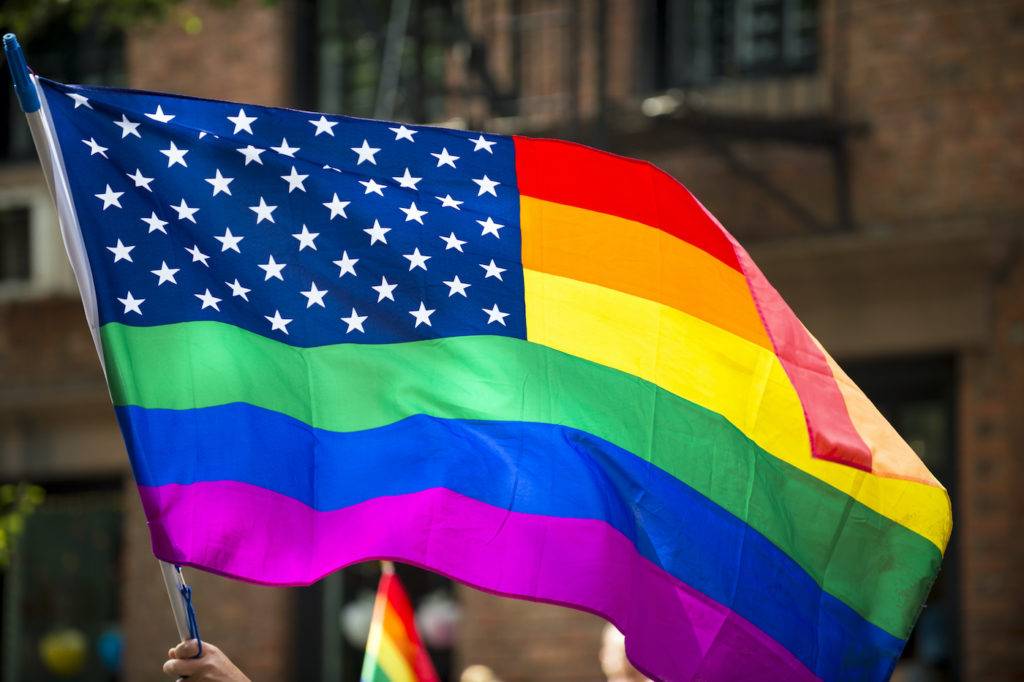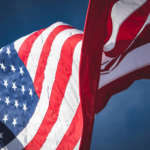Since the 2016 presidential election of Donald Trump, the term “Christian nationalism” has gained wide exposure and claimed much attention in American culture. Christian nationalism has come to serve as a theory of everything for all that is wrong with America. And if we heed the voices emanating from progressives, any form of religious nationalism is inherently conservative and harm-inducing.
Despite the popular caricatures, nationalism is a complex idea. It claims its own field of academic study, integrating sociology, psychology, ethnography, religion, history, philosophy, politics, and aesthetics into what is known as “nationalism studies.” Gesturing at “Christian nationalism” as an apocalyptic threat, without taking complexity into account, contributes to further misuse and misunderstanding of nationalism, leading to further divisiveness.
The contested nature of nationalism is part of its complexity. Nationalism is a set of ideas that describe what the nation was in its past, what it is (or should be) in the present, and what it aspires to be in the future. And what is a nation? Cornell University political scientist Benedict Anderson famously defined the nation as “an imagined political community.” Nationalism scholar Anthony Smith observed that members of a nation construct their identity using “shared memories, myths, traditions, and values.” And in doing so, they inevitably come into conflict with one another as they craft their national identity. Smith argued that people’s divisions over national identity in the present and future emerge from contested views of their past.
Nationalism, then, is the multifaceted and contested ideology that forms the vocabulary and imagination of a political community. And religion has always played an important role in the development of nationalism. Sometimes nationalism is harmful, but sometimes it is a necessary part of our collective effort at identifying ourselves and our ideals. In one sense, we are all nationalists. If we look to the Constitution as the supreme law of the land, then we are nationalists of one sort. If we look to America as a New Israel, then we are nationalists of another sort. But not all nationalisms are the same.
Start your day with Public Discourse
Sign up and get our daily essays sent straight to your inbox.Three Kinds of Nationalism
Elie Kedourie, a twentieth-century scholar who taught at the London School of Economics, mapped nationalism’s subtleties and complexities, particularly those introduced by the influence of religious and philosophical ideas. Kedourie wrote or edited over twenty books in his career, and Anthony Smith summarized his work on nationalism by observing that he saw three kinds of relationships between nationalism and religion. First, some nationalistic expressions are secular. Secular, revolutionary nationalism displaces and stamps out traditional religion as a partner alongside the state in securing order and social cohesion. Its key marker is its open hostility to traditional religion. This kind of nationalism is exemplified by eighteenth-century revolutionary France and twentieth-century revolutionary Russia. But even the violently secular revolutionary French and Soviets employed religious rituals, symbols, and behaviors for nationalistic purposes.
Second, some nationalistic expressions find an alliance with traditional religion. In this model, institutional religion subordinates itself to a nation in support of its political agenda. Under this kind of nationalism, acquiescent religions are subsumed into the state and become defined by the nation’s aims rather than by trans-political creedal tenets. An example of this would be the Anglican established church in England, with the monarch as the head of the church. English nationalism, especially as it was manifested in the nineteenth century, was informed by the sacred texts, images, symbols, and rites of the Anglican establishment.
We do not have to look far for examples of Christian nationalism emanating from the right. But equally troubling is the secular nationalism and state-driven civil religion that’s emerging from the left.
Third, nationalism often takes traditional religion and fashions it into a political theology. This kind of nationalism consists in a composite of theological themes that are articulated for a nationalistic agenda. For example, biblical ideas such as mission or election are borrowed from a coherent theological framework and redefined according to political goals. So in the 1840s, American manifest destiny represented a redefinition of the Great Commission of Matthew 28:19–20 from carrying the gospel of salvation in Christ to the world to extending the American Union over all North America. This third brand of nationalism takes religious doctrines and perverts them for purposes for which they were never designed, as opposed to the second brand of nationalism, in which traditional religion is not essentially redefined. Such a model seems consistent with how Andrew L. Whitehead and Samuel L. Perry define today’s Christian nationalism in their book, Taking America Back for God: Christian Nationalism in the United States (Oxford, 2020).
Granting that this third model can be easily found in America today, we should grant that Kedourie’s first model—secular nationalism—is also evident, although rarely identified as “nationalism.” We do not have to look far for examples of Christian nationalism emanating from the right. But equally troubling is the secular nationalism and state-driven civil religion that’s emerging from the left.
America’s Secular Nationalism
So how exactly is this secular nationalism playing out socially and politically? There are two prominent manifestations of civil religion on the left today: critical race theory’s (CRT) philosophy of history and the LGBTQ movement’s anthropology.
CRT is often described as simply a way to think about racism in America. That is true, but it is much more than that. CRT, as defined in the writings of Richard Delgado, Jean Stefancic, Derrick Bell, Kimberlé Crenshaw, Cheryl Norris, and others, draws inspiration from critical theory via figures like Antonio Gramsci and Herbert Marcuse, who saw power as society’s key frame of reference. Marcuse thought human history is defined by conflict, and CRT envisions all conflict as race conflict. Furthermore, CRT advocates argue that race-based slavery defines most, if not all, of American history and set the nation on an inalterably racist trajectory.
CRT is thus not only a way of thinking about racism, it’s also a way of thinking about history. Under CRT’s framework, history is a manifestation of the perennial racial conflict between absolute moral opponents: light against darkness, good against evil, oppressed against oppressor. CRT employs a Manichean metaphysic to situate conflicted humanity in time, and is thus incompatible with a Christian view of history. Hope, not conflict, is the defining force in a Christian philosophy of history. Christianity hopes that Jesus Christ, God incarnate, redeems sinful humanity, and that the kingdom He inaugurates will have no end. CRT displaces Christianity’s philosophy of history and becomes normative for the purposes of the nation, ruled by majoritarian tyranny.
History is a key frame of reference in nationalism. Nationalism emerges out of a perception of what the nation has been, what it is in the present, and what it aspires to be in the future. If American history is primarily a story of a conflict between light and darkness, then America’s future will be marked by the same sort of conflict. It is then morally necessary for each individual to choose the side of light in order to be an authentic citizen “on the right side of history.”
The other manifestation of leftist religious nationalism is LGBTQ anthropology. Like the ancient Gnostics, some LGBTQ advocates see a sharp divide between the physical and the spiritual. Transgender advocates argue that a person is arbitrarily “assigned” a gender at birth, and this gender assignment is predicated on mere physical traits that do not signify one’s authentic identity. Rather, gender identity is determined by how individuals conceive of themselves. Their chosen identity supersedes their physical traits. The immaterial supersedes the material.
In a 2016 First Things essay, Robert P. George argued that the Christian understanding of marriage is undermined by this new Gnosticism. With the inauguration of our modern Gnosticism, marriage adopts an entirely different philosophical hue. He wrote: “Because marriage swings free of biology and is distinguished by its emotional intensity and quality—the true ‘person’ being the conscious and feeling self—same-sex and polyamorous ‘marriages’ are possible and valuable in the same basic ways as the conjugal union of man and woman.” In other words, the “conscious and feeling” self is preeminent, and old forms and definitions (monogamous, heterosexual marriage) are dissolved.
History is a key frame of reference in nationalism. Nationalism emerges out of a perception of what the nation has been, what it is in the present, and what it aspires to be in the future.
Christianity’s view of the person—its anthropology—is also rendered meaningless by the new Gnosticism. For the person who feels he is “a man trapped in a woman’s body,” an inherent right exists for him to annex a female gender to himself. This often means taking hormones and going through a radical, mutilating surgery that would conform physical traits to one’s feelings. George wrote, “Since your body is not the real you, your (biological) sex and even your appearance need not line up with your ‘gender identity.’ You have a right, we are now told, to present yourself however you feel yourself to be.”
So how exactly are CRT and LGBTQ activism nationalistic? Let’s review nationalism’s key features. It refers to what a nation was in the past, what it is in the present, and what it aspires to be in the future. Anthony Smith wrote, “nationalism can be defined as an ideological movement to attain and maintain autonomy, unity, and identity on behalf of a population, some of whose members believe it to constitute an actual or potential ‘nation.’”
Advocates on the left have this kind of agenda. Progressives who embrace the CRT or LGBTQ movements do not seek the dissolution of the United States. Rather, they seek to set the terms of nationality in a new direction via the law, contrary to one that, in their view, has historically been racist, homophobic, and dominated by a brand of Protestant Christianity that has been complicit in oppression.
There’s a civil religion built into secular nationalism. Religion scholar Peter Gardella defines religion as “a system of nonrational [note, not irrational] commitments that holds life together.” He goes on to define civil religion as a set of “monuments, texts, and images, along with the behavior and values associated with them.” Civil religion does not necessarily entail reference to the supernatural. It does, however, entail reference to behaviors and rituals that bear out loyalties and responsibilities. Any questioning of the veracity of the tenets of CRT or the LGBTQ agenda is often regarded as disloyal and can get one cancelled.
Teaching Nationalism
We see evidence of this secularized-yet-religious nationalism in many places—media, bureaucracy, Hollywood—but perhaps it is most readily apparent in education. Since the nation’s founding, one of the most consistent and effective ways Americans crafted a national identity was through education. During the nineteenth century, public education became the rule rather than the exception in every region but the South. Robert Dale Owen, a socialist-leaning reformer who served as a representative from Indiana in Congress, said of the nationalistic project of schools: “They who decide mighty questions should be enlightened. As we would have the destinies of our kind shaped by an enlightened tribunal, let the schools of our people . . . be our peculiar care.”
Since the nation’s founding, one of the most consistent and effective ways Americans crafted a national identity was through education.
Parents are becoming more aware of the secular nationalism of the left as expressed through CRT and the Gnosticism of LGBTQ ideology in public education. The recent Virginia gubernatorial election bore their awareness and reaction out very starkly. In RealClearPolitics, Susan Crabtree cited a 2021 Free to Learn survey that found 74 percent of parents thought it inappropriate for schools to ask students about their sexuality or sexual experiences. Additionally, 50 percent of parents were opposed to the teaching of CRT in school. The survey further found that 80 percent of parents were in favor of students receiving a well-rounded education with diverse views on issues fairly represented. And according to an AP VoteCast survey, a quarter of voters considered CRT curriculum the most urgent issue of the election. Seventy-two percent of those people voted for Virginia’s new governor, Glenn Youngkin.
Dale Owen represented an American nationalism of progressivism when he spoke of education in 1846. Nationalism’s many forms throughout history have often relied on public education to acquire widespread buy-in. Obviously, today’s progressive nationalists utilize this strategy. And nationalism’s religious impulses are quite obviously a problem on the right—but also the left.














